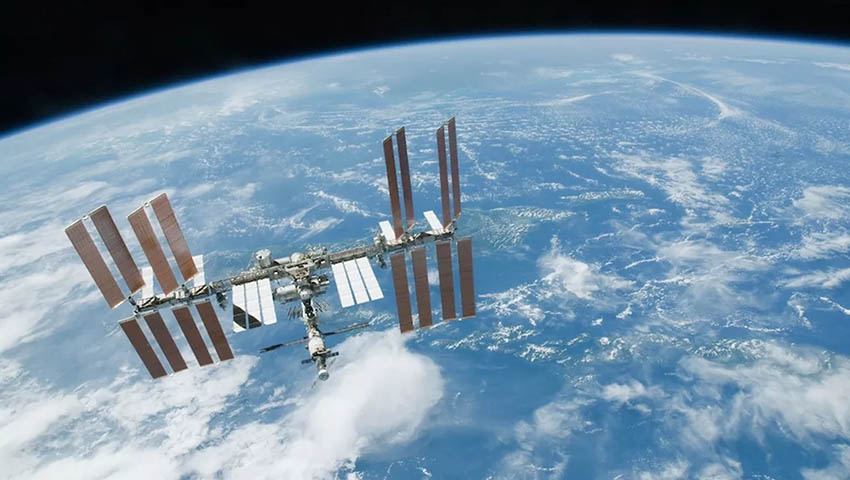Expedition 63 began in April 2020 and ends in October 2020. This expedition will include research investigations focused on biology, Earth science, human research, physical sciences and technology development, providing the foundation for continuing human spaceflight beyond low-Earth orbit to the moon and Mars.
NASA Flight Engineers Doug Hurley and Bob Behnken have nearly finished unpacking Japan’s HTV-9 cargo craft, which arrived 25 May. They have been carefully transferring several tons of new station hardware and science experiments and distributing it throughout the station.
Both astronauts also continued their research into space bubbles and how they behave in microfluid systems. Results from the study may improve spacecraft oxygen generation systems and drug delivery applications in skin patches.
One new science experiment being configured today is a high-resolution binocular telescope to be tested outside Japan’s Kibo laboratory module. Station Commander Chris Cassidy is setting up the device to demonstrate low-cost, advanced optical payloads for use by public and private institutions.
Designed to be affordable and quickly developed, the cutting-edge technology imager will provide detailed views of natural phenomena and critical infrastructure on Earth.
During Expedition 63, scientists will collect standardised data from crew members to continue expanding our understanding of how human physiology responds to long-duration life in microgravity, and will test life support technologies that will be vital to our continued exploration of deep space.
The joint researchers will conduct a range of experiments and investigations, including:
- ACE-T-Ellipsoids: This investigation creates three-dimensional colloids, small particles suspended within a fluid medium, and uses temperature to control the density and behaviour of the particles.
- Universal Waste Management System: Everyone “goes”, but space presents unique challenges for managing human waste. The Universal Waste Management System (UWMS) investigation demonstrates the long-term use of a compact toilet together with the Urine Transfer System. The UWMS allows simultaneous use of two toilets by providing automated control of flow into the Urine Processor Assembly or storage containers.
- Spaceflight Standard Measures: This investigation collects a set of measurements – blood and saliva samples, skin samples, mood and sleep questionnaires, cognitive tests and more – from astronauts before, during and after long-duration missions.
- Space Organogenesis: The need for human organs for transplants far exceeds the supply, creating a need for artificial organs made using regenerative medicine technology. Cell cultures on Earth are two-dimensional, but microgravity may enable growth of cell cultures in three dimensions without using artificial structures.

